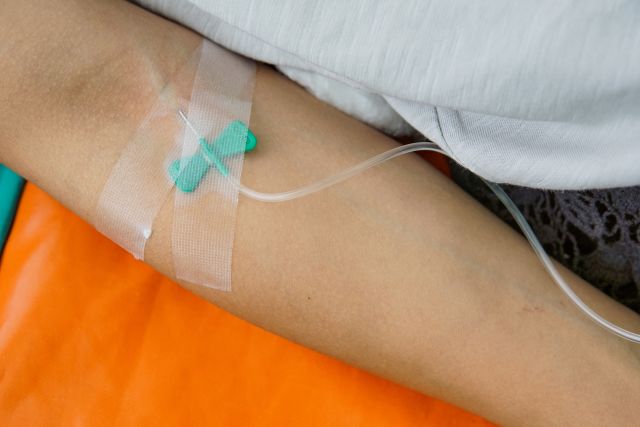Updated on July 18, 2025.
Neuromyelitis optica spectrum disorder (NMOSD) is a rare autoimmune disease. People who have NMOSD experience inflammation in the optic nerves, the spinal cord, the brain stem, and in some cases, other areas of the brain, which are all part of the central nervous system.
NMOSD can cause severe symptoms, including vision loss and blindness, weakness and paralysis of the limbs, loss of bowel and bladder control, and nausea, vomiting, and hiccups that can last days or sometimes weeks. NMOSD can cause a person to become disabled, and in some cases, it can be life-threatening.
Medical researchers have learned a great deal about NMOSD in recent decades, leading to improvements in how the condition is diagnosed and treated. Here, we examine the goals of treating NMOSD and the therapies used, including newer options.
The goals of treatment
There are a few essential goals that should be a part of a treatment plan for NMOSD:
- Treatments to shorten the duration and severity of an attack
- Treatments to prevent further relapses and permanent damage to the nervous system
- Treatments that address specific symptoms caused by NMOSD
Treating relapses of NMOSD
Most often, NMOSD follows a relapsing-remitting pattern, where a person will experience recurring attacks of inflammation and symptoms. There are several treatments that can be prescribed to stop and shorten a relapse:
Corticosteroids
Corticosteroids are anti-inflammatory drugs used to treat a wide variety of health conditions. With NMOSD, these are given intravenously (via IV) over the course of several days.
Plasma exchange
Also called plasmapheresis, a plasma exchange removes autoantibodies from the blood. Autoantibodies are abnormal immune system cells that attack healthy tissues. During the procedure, blood is taken from the body and circulated through a machine that separates blood cells from plasma. The plasma, which contains the autoantibodies, is discarded. The blood cells are mixed with a replacement plasma before being reintroduced into the body.
Corticosteroids are typically the first treatment used, and plasma exchange may be used if an attack does not respond to corticosteroids. In some cases, plasma exchange may be used as a first-line treatment for an NMOSD attack.
Preventing relapses of NMOSD
Preventing relapses is essential to treatment. Recurring relapses cause more permanent damage to the nervous system and lead to more severe disability.
The first drug therapy for NMOSD was approved in 2019. There are now several drugs for the long-term treatment of NMOSD. These drugs are approved as treatments for people with APQ4-positive NMOSD—a form of the disease where the body makes autoantibodies that attack a protein called APQ4, which is found on nerve cells in the central nervous system.
Though the different drugs work in different ways, most are monoclonal antibody drugs. Monoclonal antibodies are lab-made proteins that act on the immune system, disrupting inflammatory processes and preventing the immune system from attacking healthy cells.
There are also several drugs that are prescribed “off-label,” meaning they are used to treat NMOSD, even though NMOSD is not the main indication. Off-label prescribing is common with rare conditions where there have been few or no available treatment options in the past.
Treating NMOSD symptoms
Other therapies can be prescribed based on the symptoms caused by NMOSD. A treatment plan may include medications and therapies to address pain, bowel and bladder issues, and spasticity. It can also include low vision therapy, physical therapy, and occupational therapy. Because NMOSD affects different people in different ways, individual treatment plans are based on each person’s needs.







